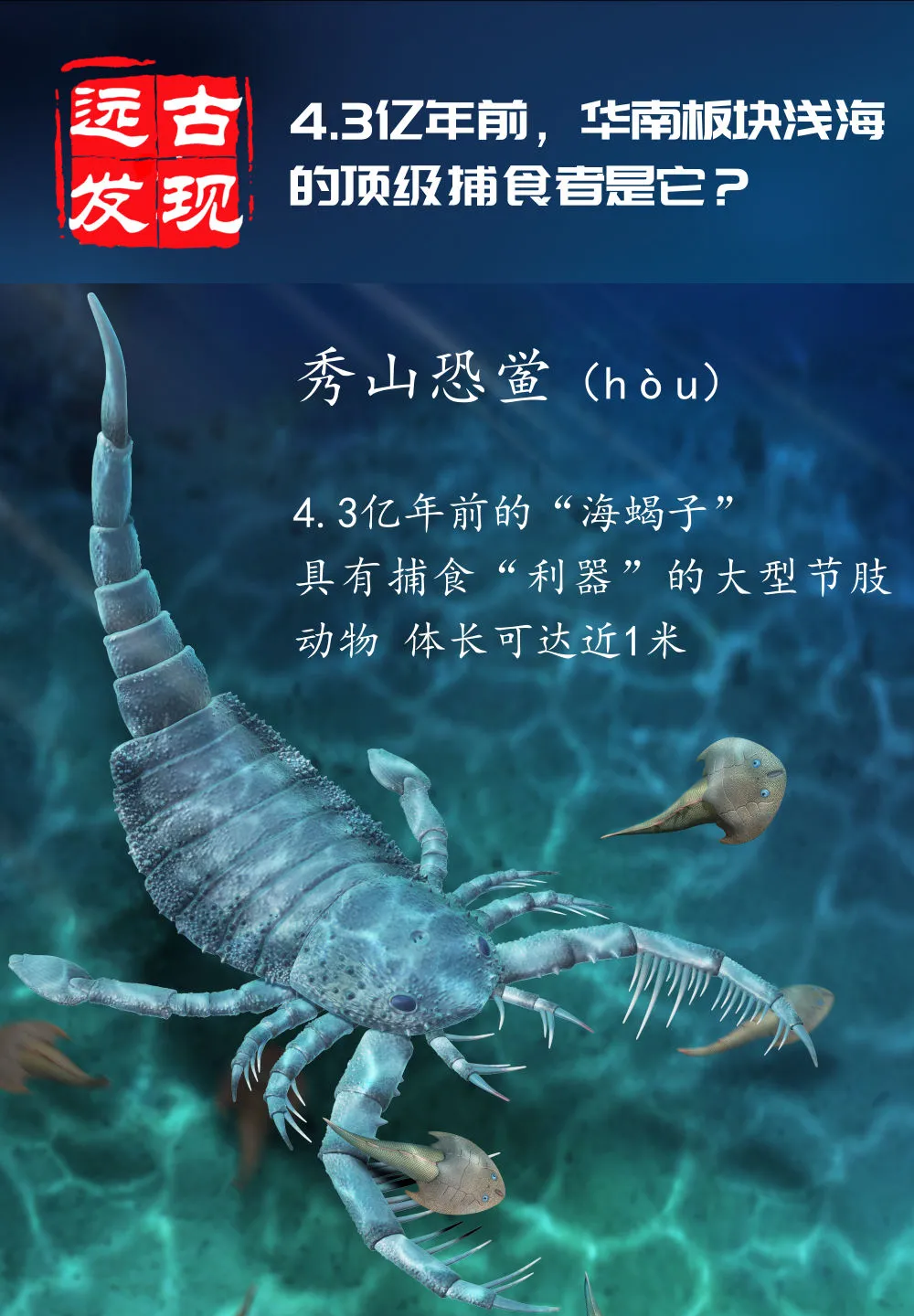Plate-footed horseshoe crabs that live in paleozoic oceans
It is an important arthropod
They resemble scorpions
Therefore, it is commonly known as "sea scorpion"
The Nanjing Institute of Geology and Paleontology of the Chinese Academy of Sciences released the news
The institute's researchers work in conjunction with other research teams
Found in Xiushan County, Chongqing
430 million years ago during the Silurian period
A new genus of plate-footed horseshoe crab: Xiushan shrimp (hòu)
The relevant results have been published in
International Journal Science Bulletin
(English version).
According to Wang Han, a master's student at the Institute of Southern Ancient Studies of the Chinese Academy of Sciences, the Xiushan horseshoe crab belongs to the family Plate-footed crab in the systematic classification, with a large body and a body length of nearly 1 meter. Its third pair of appendages is specialized and enlarged, with a high density of hard long spines, and the posterior body and tail resemble a scorpion.
"The phobic horseshoe is the genus name, and Xiushan is the species name, because of its scary appearance, it is named the phobic horseshoe."

Wang Han said that the unique appendages of the hybrid-winged horseshoe crab are believed to be useful for fixing prey, which is a manifestation of its strong predatory ability. However, there has been a lack of in-depth knowledge of such animals, and the previously reported mixed-winged horseshoe crab consists of two genera and four species, all based on a small number of fossil specimens from the Silurian Laurus ancient land (now Europe and North America), and no new genera have been found in the past 80 years.
"The fossil materials found this time preserve the body structure of the dinosaur's appendages, torso, reproductive appendages and tail, showing detailed features such as body surface ornamentation, providing new evidence for the discussion of morphological diversity of the family Hybridis." Wang Han said.
Fossil map of Xiushan dinosaur provided by the Nangu Institute of the Chinese Academy of Sciences
More than 400 million years ago, china today consisted of multiple plates, one of which was the South China Plate, which included the area south of the Qinling Mountains.
Previously, no large predators were found in the shallow sea areas of the early Silurian period of the South China Plate, and the dinosaur, as a large arthropod with a predatory "weapon", is most likely to play the role of a top predator in this environment, which is the nightmare of the jawless armorfish living together at the same time.
Fossil map of the undetermined species (a-c) and the Xiushan shrimp (d-i) Courtesy of the Nangu Institute of the Chinese Academy of Sciences
Wang Bo, a researcher at the Institute of Southern Antiquities of the Chinese Academy of Sciences who led the research, said that the fossil record of the Silurian plate footed horseshoe crab has been concentrated in the Laoru ancient land and its surrounding areas, and their traces are rarely found in and around the vast gondwana continent.
Gondwana is a supercontinent that was once distributed in the southern hemisphere, and more than 400 million years ago, the continent included China's South China Plate. "This study, along with the discovery of a variety of fossils of plate-footed horseshoe crabs in the South China Plate in recent years, suggests that there may also be a thriving group of plate-footed horseshoe crabs in and around the continent of Gondwana."
Ecological restoration map of Xiushan horse crab (drawn by Yang Dinghua) Courtesy of the Nangu Institute of the Chinese Academy of Sciences
The research was done by the Institute of Southern Antiquology of the Chinese Academy of Sciences, the Institute of Vertebrate Paleontology and Paleoanthropology of the Chinese Academy of Sciences, and the research teams from Germany and the United Kingdom.